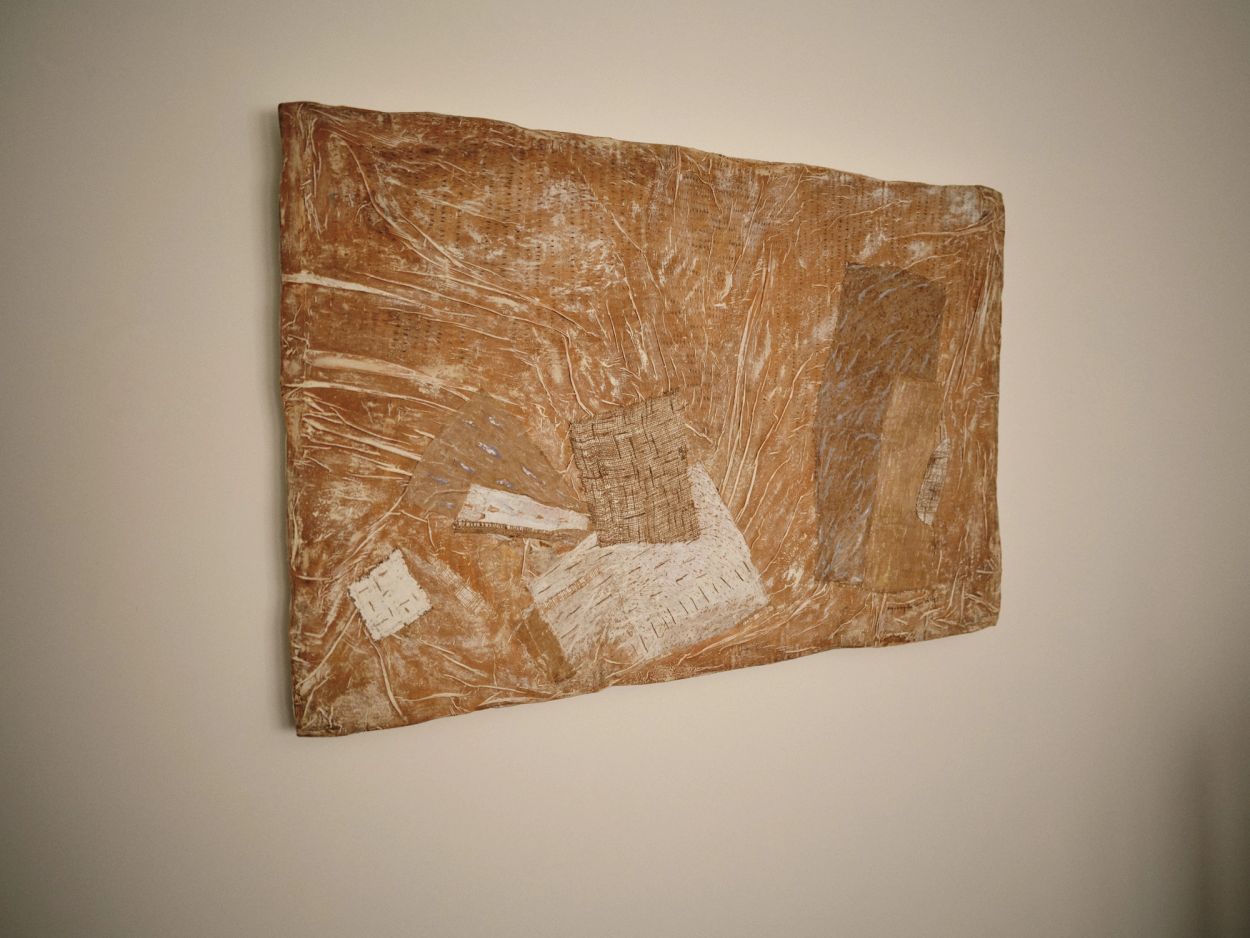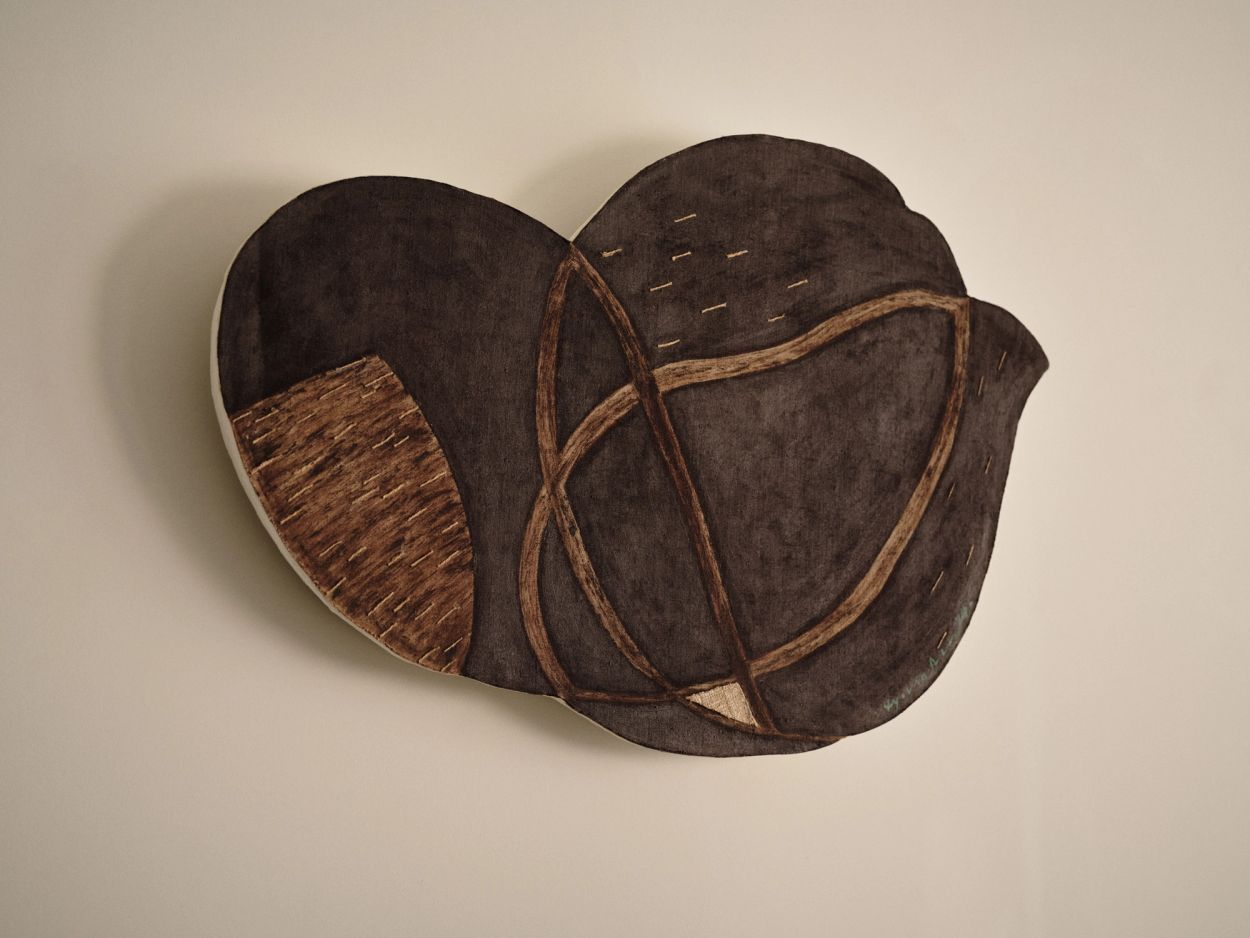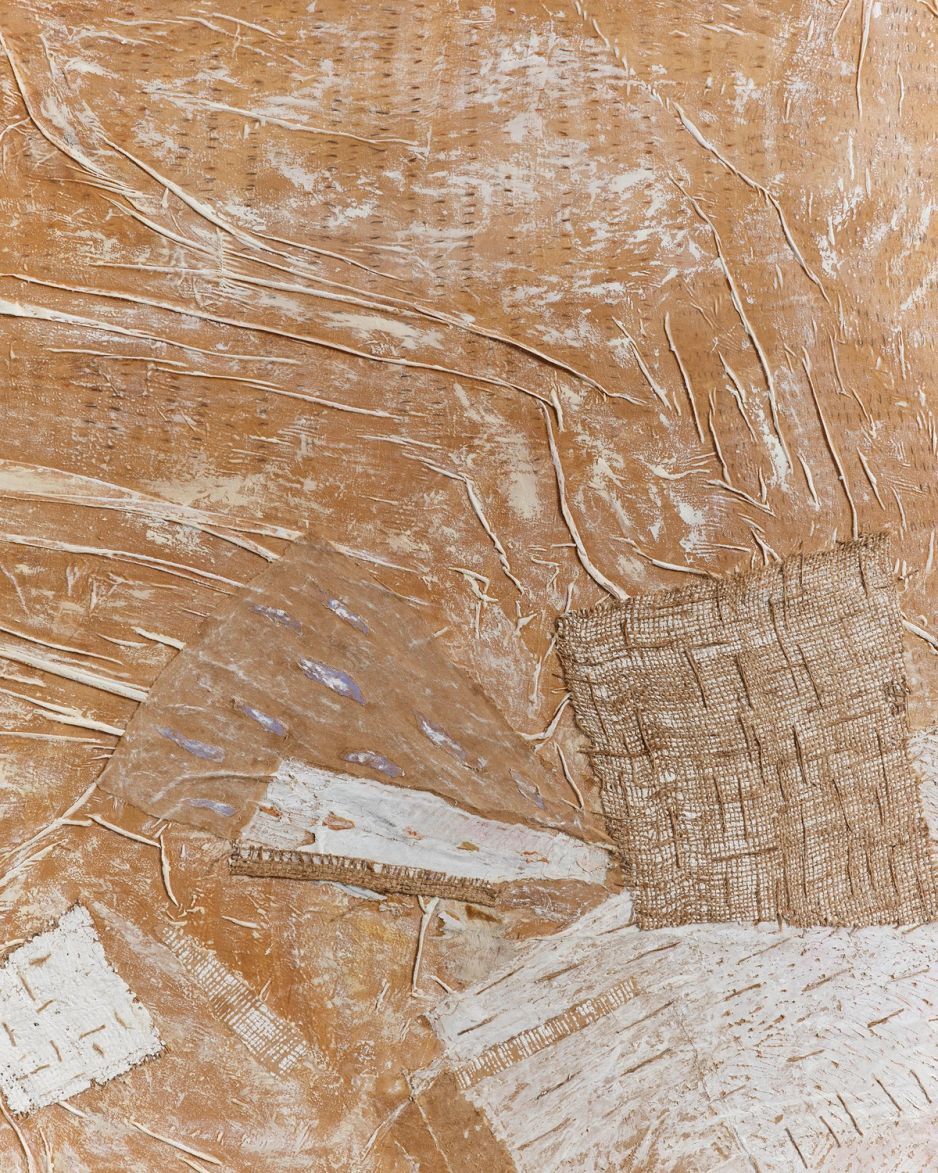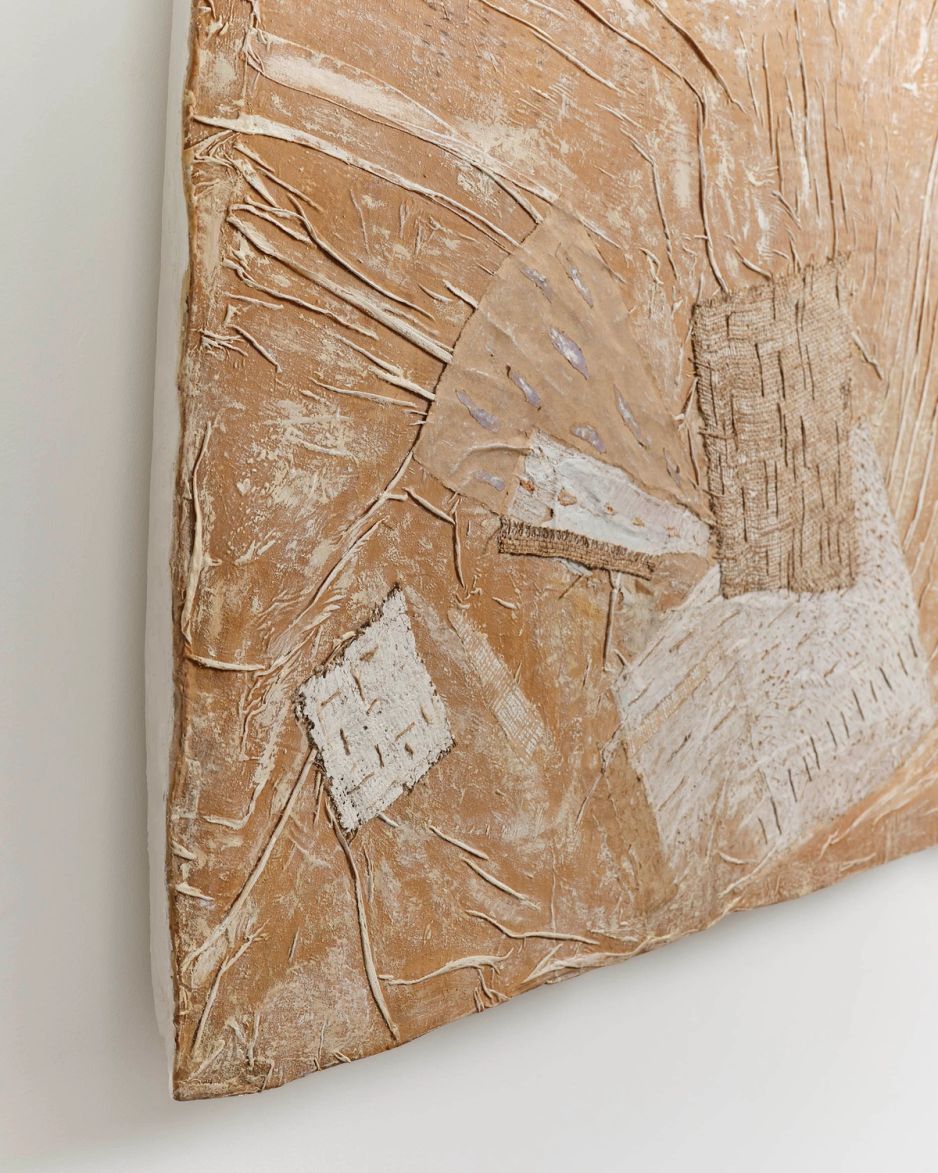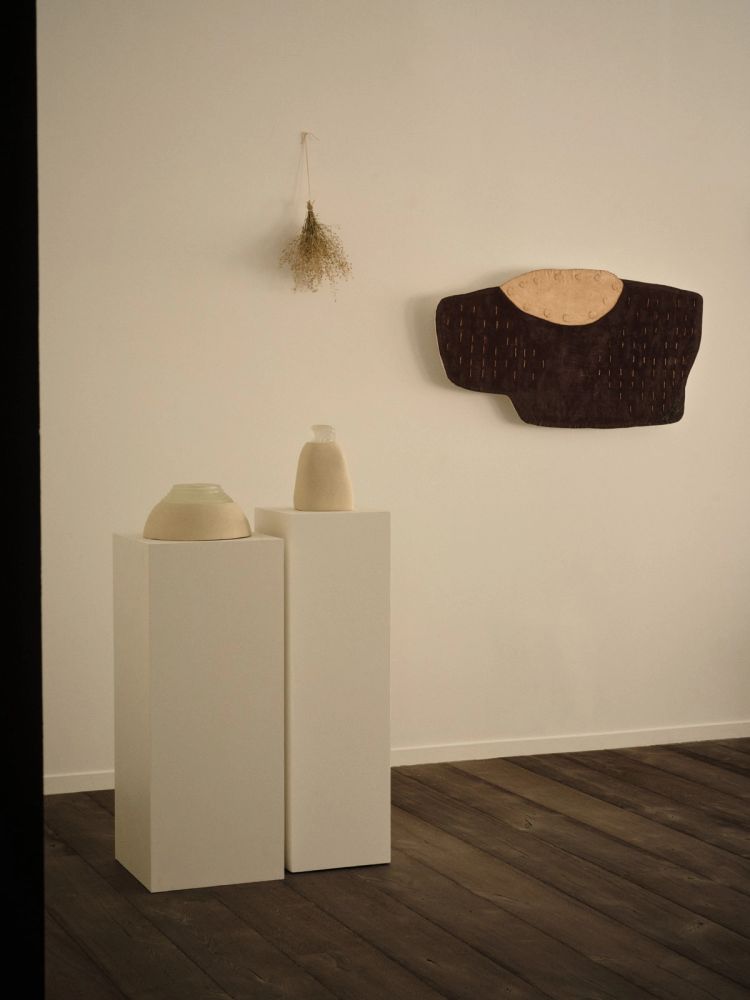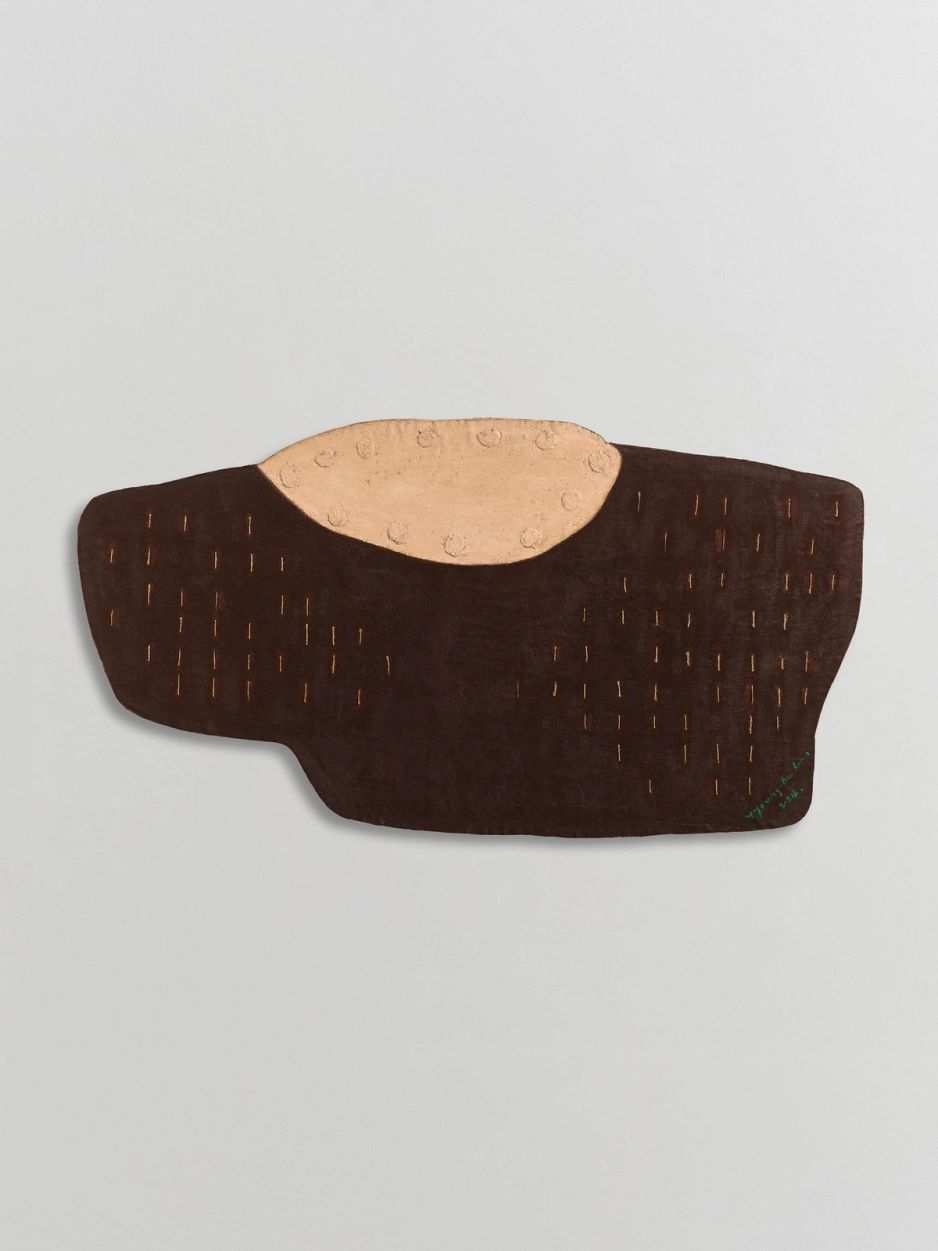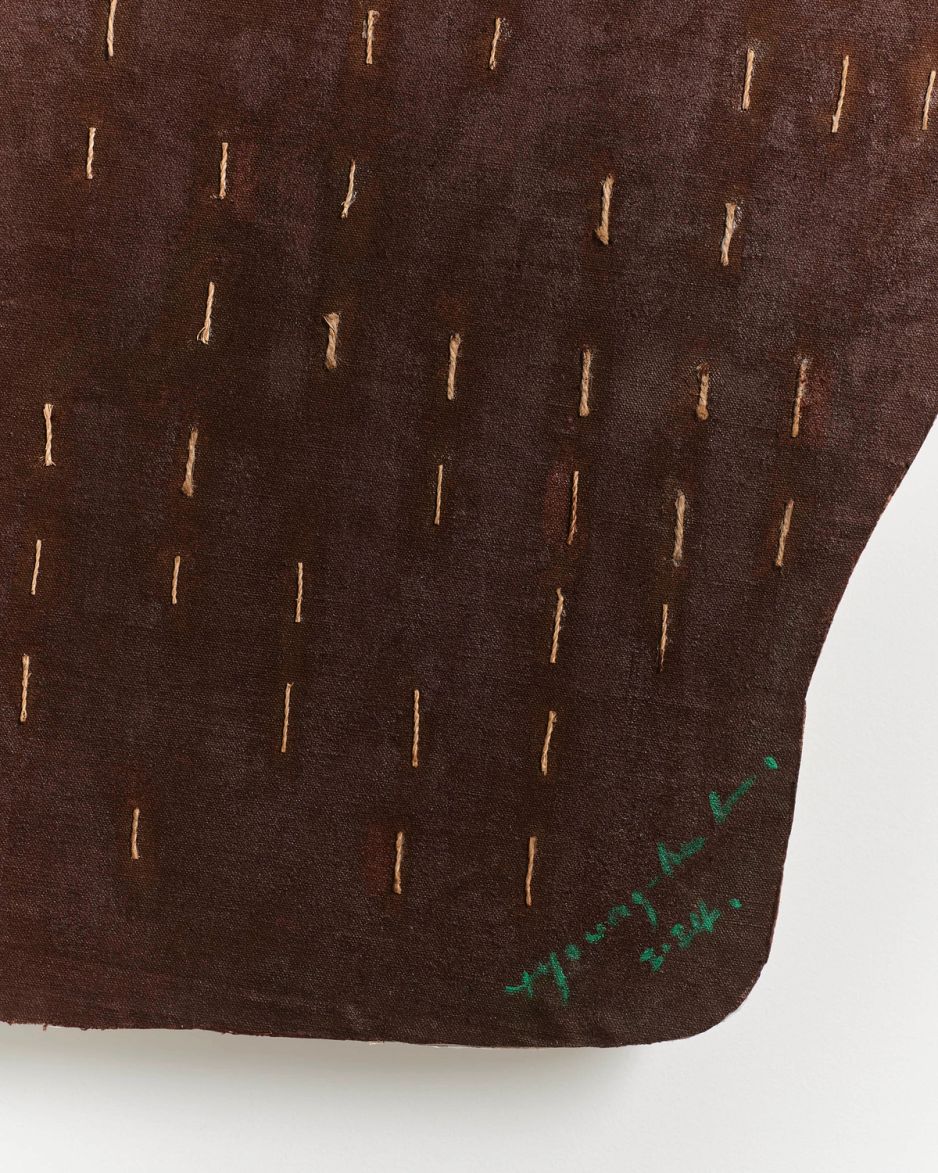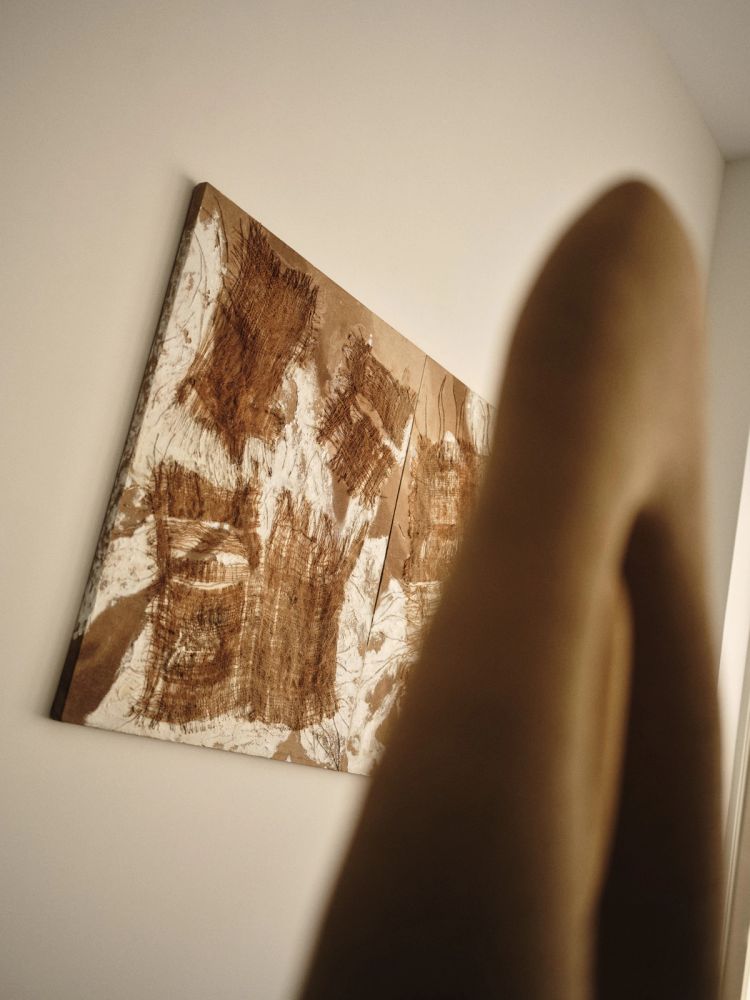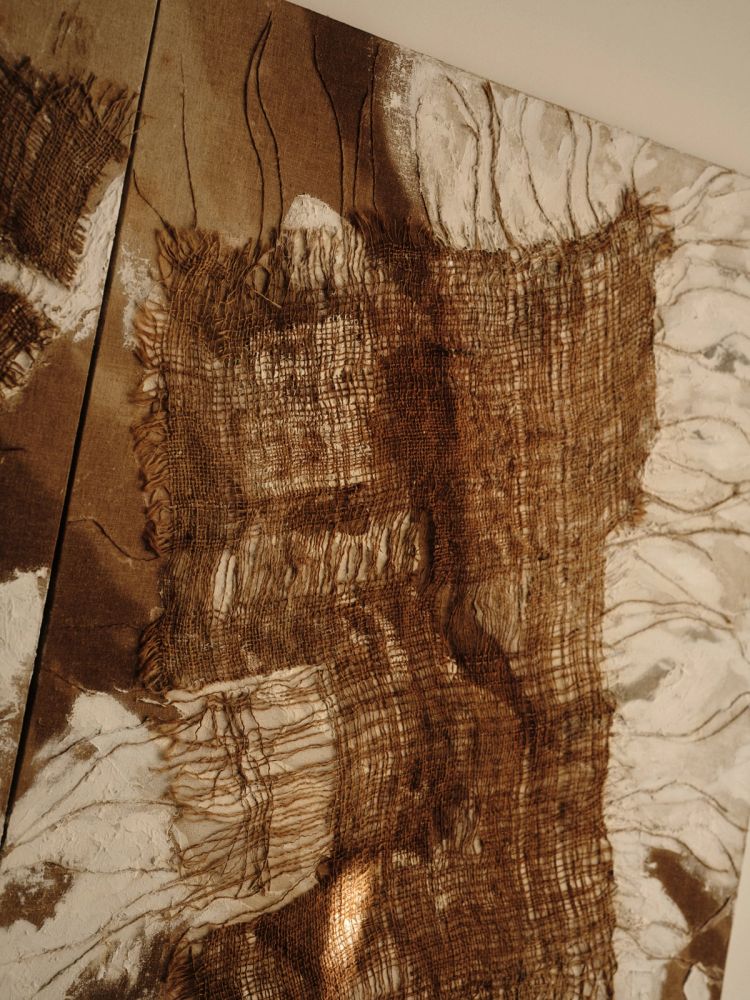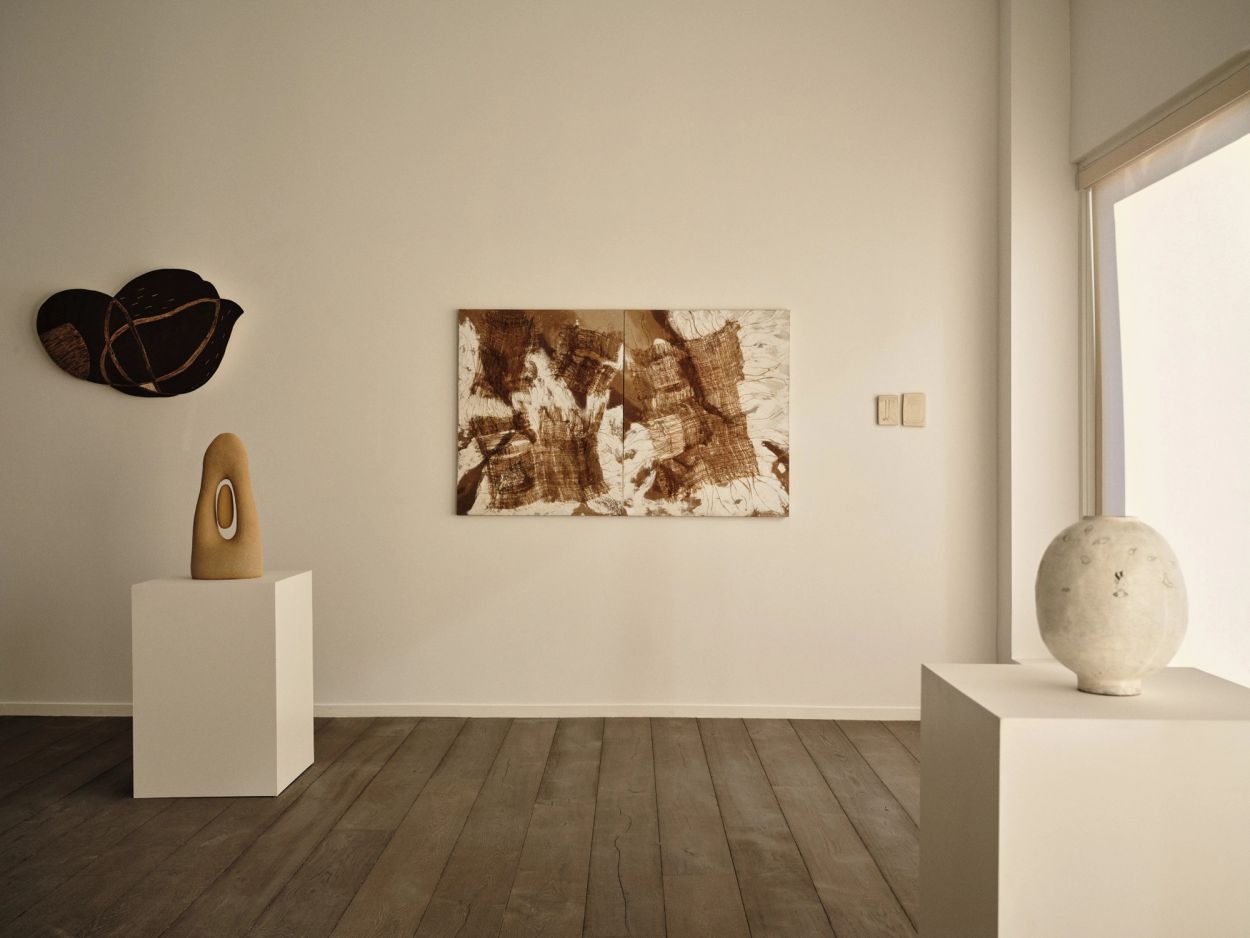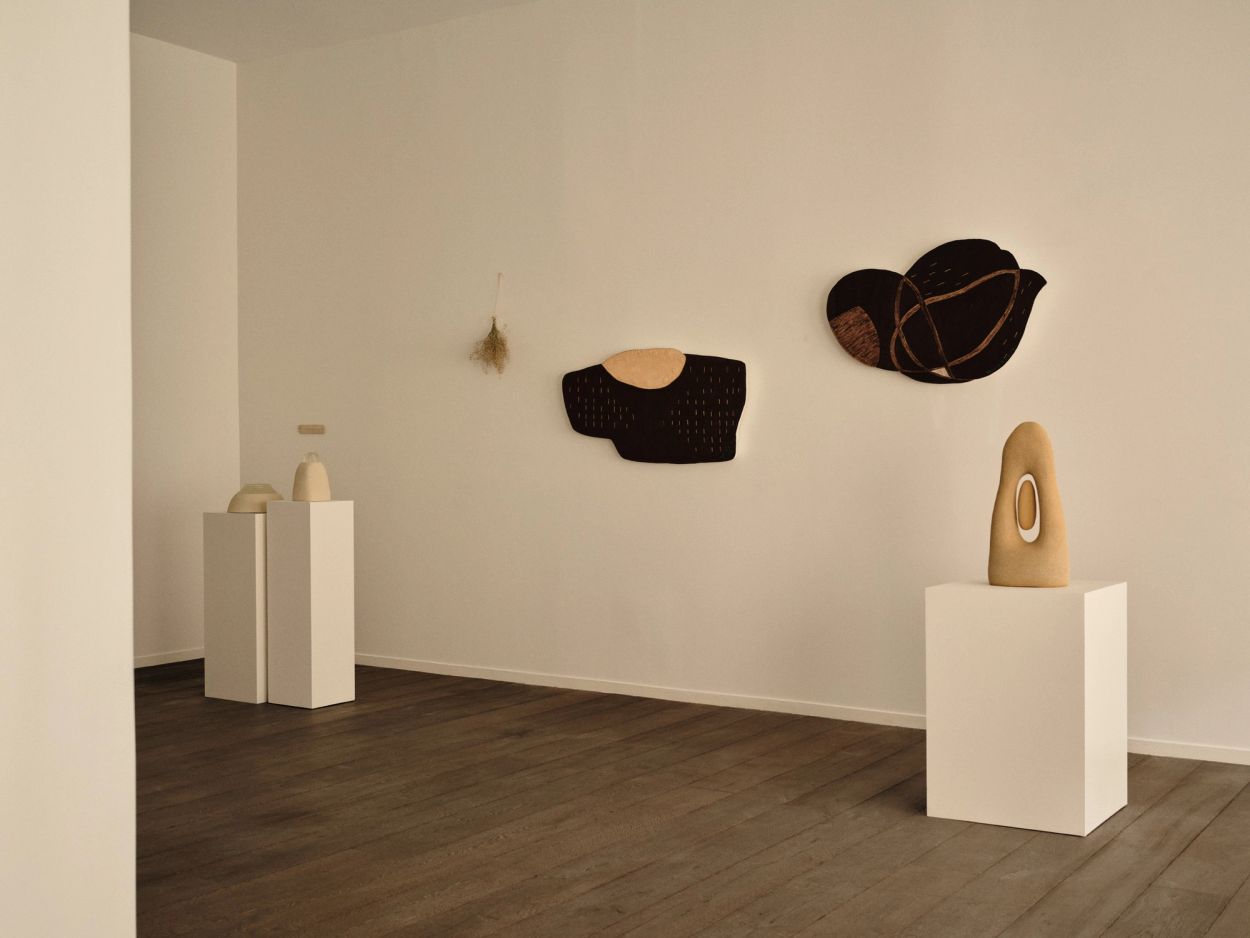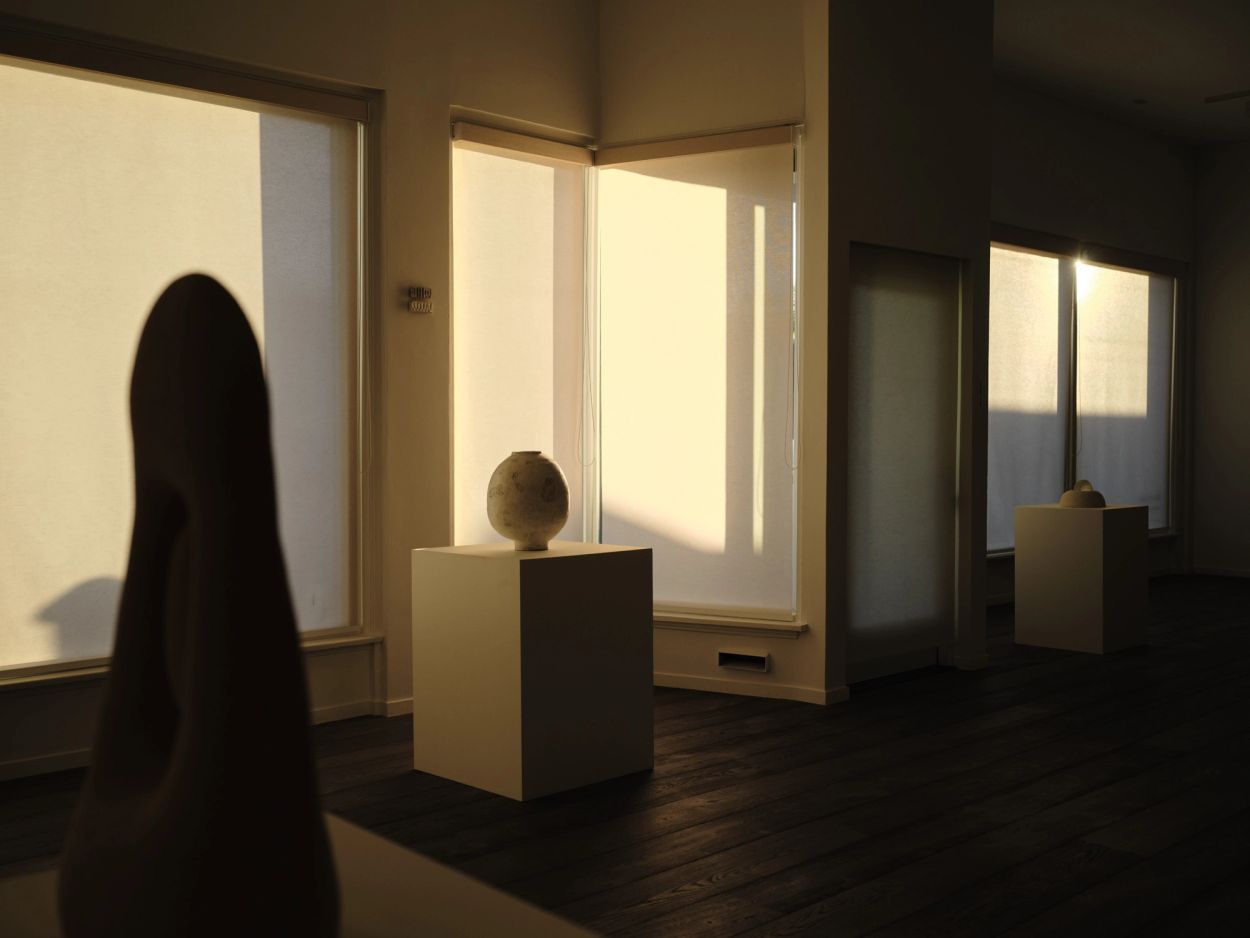In Conversation with Myoung Ae Lee
Over the past four decades, Korean artist Myoung Ae Lee developed a practice delving into themes of materiality, relationality, and space. Lee’s shaped canvases, currently on view at our LA gallery, challenge the flatness of the surface while preserving its essence. The resulting canvases by Lee interweave the artist’s individuality with the materiality of her medium, imbuing a sense of poetic correspondence. During a conversation at her home-studio in Daejeon, Korea, Lee and I discussed her shaped canvases, her return to academia, and the ongoing process of discovery and revelation at the core of her practice.
Francis: Myoung Ae, the four works included in your recent exhibition at Francis —you, me and us—incorporate multitudes of materials. Can you tell me more about your exploration of materiality?
Myoung Ae Lee (ML): After many years working in oil painting, there came a moment when my concept of space changed. Through that experience, I was able to go beyond what’s visible and decided to pursue a master's degree. I had worked with abstract forms, even before this point, but as I continued my studies, I shifted completely to abstract art and started interweaving a variety of materials.
Sometimes, a single piece of fabric can inspire an entire project. When an image from the fabric resonates with me, I start the work, gathering more materials that go along with that vision. For example, the burlap pieces at Francis are inspired by the materiality of the burlap itself. I observed its texture, color, and structure and thought about how I could bring its essence out through my hands.
I typically work with natural, minimally processed materials. I love seeing how the materials change—how they transform when I add oil or when mixed with white pigment. That’s what drives me to work: a sense of communication with the materials.
Francis: How did you become interested in shaped canvases?
ML: I had made various efforts on the rectangular canvas, but I stepped outside of the canvas as I was contemplating how I can express my individuality. I researched extensively on how to create the kind of sculptural space I wanted to depict within my painting while maintaining its two-dimensionality. It took much time to find the right surface and form that can express and preserve the touch of my hands.
Francis: I’m curious about the process of creating these shaped canvases.
ML: It’s a multi-step process. For example, the two brown shaped canvases currently on display at Francis were completed last spring. For those, I used a sturdy linen. It’s the kind of linen used to make sails. I layered hanji on the back of the linen, along with export-grade cardboard and then construction materials [to give it depth]. After that, I wrapped everything with hanji and finished it with putty. Each step of this process is very important, and through each phase, the shape transforms. The resulting layers within my shaped canvases create steadiness—it’s as much a layering of time, as a layering of materials.
Francis: Where do you draw your materials from?
ML: Materials come to me naturally. When I go for a walk and see a reed field, there are natural colors there that stand out. Or sometimes, when I visit a specific place, certain colors or materials will catch my attention. I draw from these daily encounters with the world around me.
Francis: Did your work with corrugated cardboard come about in a similar way?
ML: Yes, exactly. I first started using corrugated cardboard as a material to support my shaped canvases. I would glue canvas over it to reinforce it, but one day the strong stripes in the cardboard caught my attention. I loved the intense formal challenge of figuring out how to manipulate the material. Cardboard is essentially just made up of straight lines—vertical and horizontal. But I had to think about how to combine and manipulate those lines to create various forms. In a similar way, I treated burlap as a material with its own inherent structure, and I experimented with how I can work with and against these characteristics. My work is an exploration of the material’s limits and possibilities.
Francis: All four works included in our exhibition reveal more of themselves, the longer you spend time with them; and the relationship between various components—form, texture, and materials—are particularly interesting. Can you share more on the theme of relationality?
ML: My focus on relationality derived from a question: how do we exist together? When I think of each motif on the canvas as an individual, they may be far apart or placed close together. What matters is how to bring these elements together naturally. For example, with any of my pieces, there are various motifs and materials. Each of these motifs acts individually, with its own characteristics, but how do they work together within the frame of the canvas? My interest in relationality, between the individual and the whole, extends beyond the formal concerns.
Francis: You earned a doctorate degree in 2016 with a dissertation titled Reinterpretation of Space through Shaped Canvas. Why did you decide to return to school and how did your research and writing affect your approach to painting?
ML: I went back to school to refine my practice. I wanted to understand where I stood and where I was headed. I suppose I wanted to understand myself and my work better. Pursuing a PhD allowed me to look at my practice in the broader context of art history. It afforded me an objective take on where I stood. I wasn’t aware of artists like Donald Judd, Barnett Newman, or Frank Stella when I first started working on shaped canvases. It’s funny, right? But later, I realized that the work I was doing could be categorized similarly to theirs within the artistic canon. This also gave me a clearer idea of where I wanted to go next.
Francis: Lastly, I would like to hear more about the exhibition. What aspect of your current practice did you want to showcase in this particular group show and why?
ML: Individual pieces come together to form another whole in an exhibition. With this group show, I wanted to create a correspondence—a sense of resonance with one another —where the works are in dialogue. Even though I wasn’t familiar with Nancy and Yoona’s practice, I believe there is a sense of cohesion between my work and the rest of the show. They are in correspondence, each revealing something new about the other.
Words
- Min Park
Photos
- Rich Stapleton
